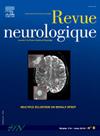人工智能在癫痫成像中的应用:现状与未来展望。
IF 2.3
4区 医学
Q2 CLINICAL NEUROLOGY
引用次数: 0
摘要
近年来,人工智能(AI)日益成为医学研究的焦点,对癫痫病学也产生了重大影响。深度学习(DL)和机器学习(ML)--人工智能的核心--的研究探索了它们在癫痫成像中的应用,主要集中在病灶检测、致痫区域的侧位和定位、手术后结果预测以及自动区分癫痫患者和健康人。目前正在对不同神经成像模式下的各种人工智能驱动方法进行研究,最终目标是将这些工具整合到临床实践中,以提高癫痫的诊断和治疗水平。随着计算能力的不断进步,人工智能应用的开发、研究整合和临床实施预计将加速,使其更加有效和易用。然而,确保患者数据的安全需要严格的监管措施。尽管存在这些挑战,但人工智能代表着医学变革的机遇,尤其是在癫痫神经影像学领域。由于 ML 和 DL 模型依赖于大型数据集,因此促进合作和扩大开放数据库在未来将变得越来越重要。本文章由计算机程序翻译,如有差异,请以英文原文为准。
Artificial intelligence applied to epilepsy imaging: Current status and future perspectives
In recent years, artificial intelligence (AI) has become an increasingly prominent focus of medical research, significantly impacting epileptology as well. Studies on deep learning (DL) and machine learning (ML) – the core of AI – have explored their applications in epilepsy imaging, primarily focusing on lesion detection, lateralization and localization of epileptogenic areas, postsurgical outcome prediction and automatic differentiation between people with epilepsy and healthy individuals. Various AI-driven approaches are being investigated across different neuroimaging modalities, with the ultimate goal of integrating these tools into clinical practice to enhance the diagnosis and treatment of epilepsy. As computing power continues to advance, the development, research integration, and clinical implementation of AI applications are expected to accelerate, making them even more effective and accessible. However, ensuring the safety of patient data will require strict regulatory measures. Despite these challenges, AI represents a transformative opportunity for medicine, particularly in epilepsy neuroimaging. Since ML and DL models thrive on large datasets, fostering collaborations and expanding open-access databases will become increasingly pivotal in the future.
求助全文
通过发布文献求助,成功后即可免费获取论文全文。
去求助
来源期刊

Revue neurologique
医学-临床神经学
CiteScore
4.80
自引率
0.00%
发文量
598
审稿时长
55 days
期刊介绍:
The first issue of the Revue Neurologique, featuring an original article by Jean-Martin Charcot, was published on February 28th, 1893. Six years later, the French Society of Neurology (SFN) adopted this journal as its official publication in the year of its foundation, 1899.
The Revue Neurologique was published throughout the 20th century without interruption and is indexed in all international databases (including Current Contents, Pubmed, Scopus). Ten annual issues provide original peer-reviewed clinical and research articles, and review articles giving up-to-date insights in all areas of neurology. The Revue Neurologique also publishes guidelines and recommendations.
The Revue Neurologique publishes original articles, brief reports, general reviews, editorials, and letters to the editor as well as correspondence concerning articles previously published in the journal in the correspondence column.
 求助内容:
求助内容: 应助结果提醒方式:
应助结果提醒方式:


